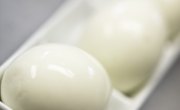
The atmosphere performs a multifaceted role—it shields the earth from meteorites, protects it from many harmful rays in space and houses the gases that make life possible. Several atmospheric experiments can be demonstrated within the confines of a classroom. Atmospheric experiments allow kids to learn about clouds, weather, climate, pollution and even the sun’s effects on the planet.
Air Pressure Experiment 1
Air pressure is a key concept related to the atmosphere. The simple exercise of inverting a glass jar over a burning candle standing on a shallow pan of water can be a simple demonstration of atmospheric pressure. (Always ensure an adult is present to supervise this experiment.) The flame goes out as it uses up the trapped oxygen. The vacuum causes a change in air pressure, causing the water level inside the glass jar to rise. The phenomenon occurs naturally in weather fronts, where warm air meets cold air. Hurricanes, for instance, build up as air rises from a warm body of water and creates a low pressure area.
Water Vapor
Clouds are another natural phenomenon with which students are familiar. Clouds form when water vapor is present in pressurized atmospheric conditions, along with dust particles in the air. This can be demonstrated by filling a third of a two-liter plastic soft drink bottle with warm water. Reseal the cap to make the first ingredient: water vapor. Next, open the bottle, drop a lighted match in the opening and quickly put the cap back on to introduce smoke, serving as the “particles.” Finally, squeeze the bottle hard and release; carefully observe the artificial “clouds” appearing at the release as air pressure drops (the third cloud ingredient).
Greenhouse Effect
A discussion of the Earth’s atmosphere is not complete without discussing climate change. Several experiments can be used to illustrate the greenhouse effect. In one simple setup, place in the sun a dark-colored basin holding a thermometer atop an inverted paper cup. Covering the basin with plastic wrap will result in a higher temperature reading because heat is trapped inside. The same principles can be observed in a parked car that absorbs short-wave energy through the windows as it sits under a hot sun. This results in the interior giving off long-wave infrared radiation, much of which is trapped within the vehicle.
Air Pressure Experiment 2
Another type of experiment is very easy to do and can even be performed as a cheap party trick. With a glass filled roughly to one-third, grab a coaster and cover the opening. Press it firmly to the glass and then tilt it upside down. Now you can let go of the coaster and it should stick. The reason is the air pressure pushes up through the glass with close to 15 pounds of force.
References
About the Author
Steve Johnson is an avid and passionate writer with more than five years of experience. He's written for several industries, including health, dating and Internet marketing, as well as for various websites. He holds a bachelor's degree from the University of Texas.
Photo Credits
Jupiterimages/Photos.com/Getty Images
